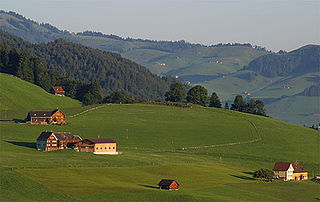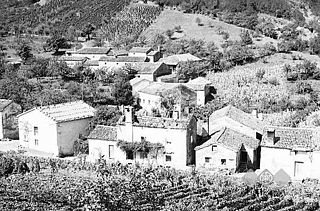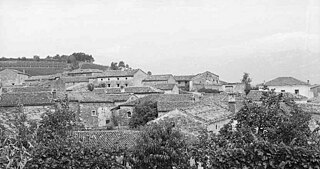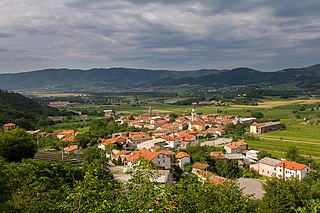| Nanos Ravnik (until 1955) | |
|---|---|
| Coordinates: 45°49′10.99″N14°1′11.11″E / 45.8197194°N 14.0197528°E Coordinates: 45°49′10.99″N14°1′11.11″E / 45.8197194°N 14.0197528°E | |
| Country | |
| Traditional region | Littoral |
| Statistical region | Gorizia |
| Municipality | Vipava |
| Area | |
| • Total | 38.09 km2 (14.71 sq mi) |
| Elevation | 903.9 m (2,965.6 ft) |
| Population (2002) | |
| • Total | 9 |
| [1] | |
Nanos (pronounced [ˈnaːnɔs] ) is a dispersed settlement on Mount Nanos in the Municipality of Vipava in the Littoral region of Slovenia. [2]

A dispersed settlement, also known as a scattered settlement, is one of the main types of settlement patterns used by landscape historians to classify rural settlements found in England and other parts of the world. Typically, there are a number of separate farmsteads scattered throughout the area. A dispersed settlement contrasts with a nucleated village.

The Municipality of Vipava is a municipality in western Slovenia. The seat of the municipality is the town of Vipava. Historically, it used to be a part of the traditional region of Inner Carniola, but it is now generally regarded as a part of the Slovenian Littoral. The municipality was established in its current form on 3 October 1994, when the former larger Municipality of Ajdovščina was subdivided into the municipalities of Ajdovščina and Vipava.

Slovenia, officially the Republic of Slovenia, is a sovereign state located in southern Central Europe at a crossroads of important European cultural and trade routes. It is bordered by Italy to the west, Austria to the north, Hungary to the northeast, Croatia to the southeast, and the Adriatic Sea to the southwest. It covers 20,273 square kilometers (7,827 sq mi) and has a population of 2.07 million. One of the successor states of the former Yugoslavia, Slovenia is a parliamentary republic and a member of the United Nations, of the European Union, and of NATO. The capital and largest city is Ljubljana.
















